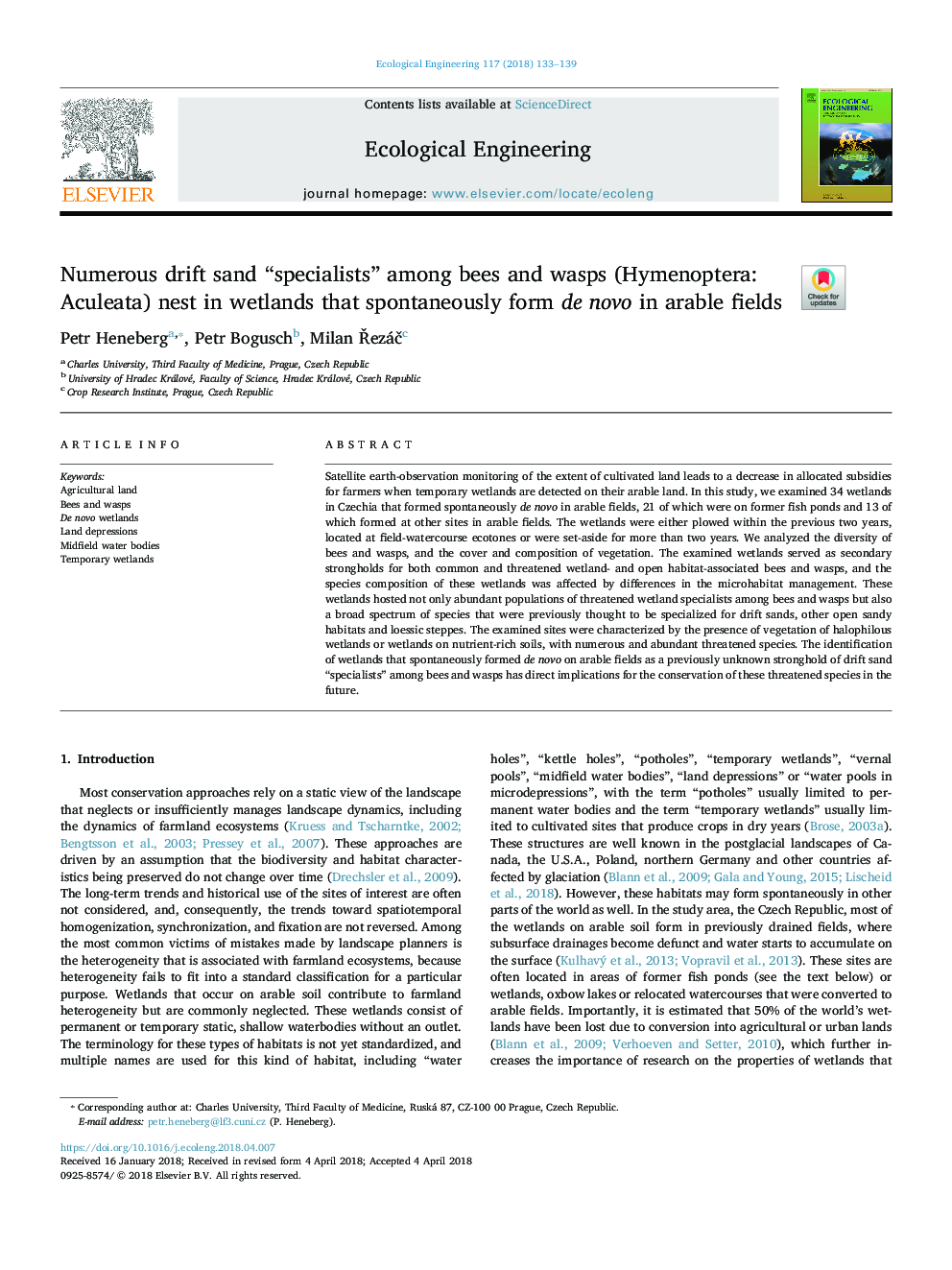| Article ID | Journal | Published Year | Pages | File Type |
|---|---|---|---|---|
| 8847883 | Ecological Engineering | 2018 | 7 Pages |
Abstract
Satellite earth-observation monitoring of the extent of cultivated land leads to a decrease in allocated subsidies for farmers when temporary wetlands are detected on their arable land. In this study, we examined 34 wetlands in Czechia that formed spontaneously de novo in arable fields, 21 of which were on former fish ponds and 13 of which formed at other sites in arable fields. The wetlands were either plowed within the previous two years, located at field-watercourse ecotones or were set-aside for more than two years. We analyzed the diversity of bees and wasps, and the cover and composition of vegetation. The examined wetlands served as secondary strongholds for both common and threatened wetland- and open habitat-associated bees and wasps, and the species composition of these wetlands was affected by differences in the microhabitat management. These wetlands hosted not only abundant populations of threatened wetland specialists among bees and wasps but also a broad spectrum of species that were previously thought to be specialized for drift sands, other open sandy habitats and loessic steppes. The examined sites were characterized by the presence of vegetation of halophilous wetlands or wetlands on nutrient-rich soils, with numerous and abundant threatened species. The identification of wetlands that spontaneously formed de novo on arable fields as a previously unknown stronghold of drift sand “specialists” among bees and wasps has direct implications for the conservation of these threatened species in the future.
Keywords
Related Topics
Life Sciences
Agricultural and Biological Sciences
Ecology, Evolution, Behavior and Systematics
Authors
Petr Heneberg, Petr Bogusch, Milan ÅezáÄ,
